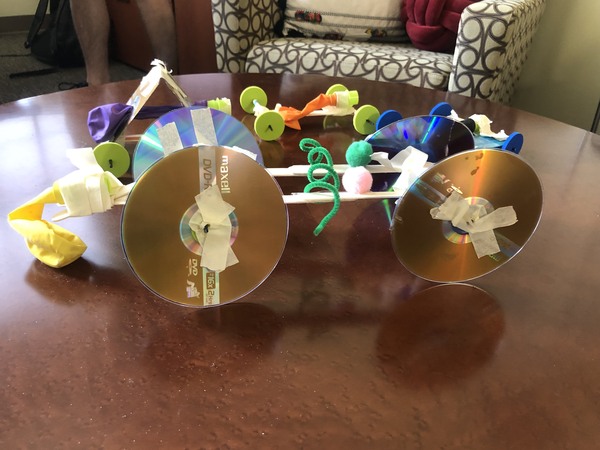
How can we equip students to address the social and environmental impacts of new and emerging technologies such as Bitcoin, artificial intelligence, or electric cars? And perhaps more importantly, how can we prepare them to address the impacts of technologies yet to be developed?
When teaching my course on “Technological Revolutions and Environmental Change” this past semester, I hoped to answer exactly these questions. No matter their major or future career path, students will constantly interact with technologies. As future engineers, business leaders, marketing executives, policy makers, or even just as members of the public, students need a proper and critical understanding of the technology’s place in society.
But where can students acquire these multifaceted understandings?
These perspectives can sometimes come from personal interest or classroom instruction in traditional disciplinary departments, but the most effective way to stimulate interdisciplinary understandings of technology is to provide specific instructional settings for students to engage with these perspectives. This past semester, teaching in the Science, Technology, and Values minor of the Reilly Center, I was able to offer that opportunity for a group of 18 incredible undergraduate students.
My experience teaching this class solidified two ideas for me:
1) interdisciplinary understandings of technology are crucial for future members of the workforce and 2) these understandings must be conveyed alongside students’ traditional disciplinary education by offering classes dedicated to interdisciplinary conversations
Engineering in Practice: The Value-Ladenness of Balloon-Powered Cars
The most important lesson I tried to convey to my students was that because technologies are shaped by people, technologies are never value-neutral. My students learned this for themselves when I tasked them with designing and building balloon-powered cars early in the semester. Before they began construction, I set forward a number of objectives they could pursue such as “Fastest Car,” “Most Endurance,” “Safest Car,” and “Most Innovative Design.”

Through this activity, my students found that even in benign cases like balloon-car design, engineering involves inherent value judgments. Would they use more expensive materials to create a more structurally sound and safer vehicle? Would they value speed over safety so that they could win a race against their classmates? Would they try to create the most “innovative design”? What does “innovative" even mean?
In a writing exercise later that week, my students described how the goal their team pursued affected the design of their car. Explaining that her team was pursuing the award for “Most Innovative Design,” one of my students said in her paper, “My team preferred to attain this award over winning fastest or most budget-friendly car so our choices also influenced our final product.” She argued that this demonstrated “the notion that technology is heavily value-laden.” I couldn’t have said it better myself!
We’ve Seen This Before: Lessons from the History of Technology
In addition to that engineering activity, most of my course consisted of readings analyzing historical moments of rapid technological change. As Mark Twain supposedly said, “History doesn’t repeat itself, but it often rhymes.” And though no two moments of technological change are the same, it’s naive to suggest that the present moment of rapid technological advancement is completely unprecedented. Building on the lessons of the balloon-powered car activity, these readings presented historical examples that further demonstrate the value-ladenness of technology and the impact that technology has had on the natural environment.
I pushed my students to move past trying to memorize the history I presented to them and instead asked them to find any relevance these historical stories may have for our present moment. These are the important lessons students should pull from history when they think
critically about the potential impacts of emerging technologies.
My students excelled at this, drawing connections in class discussions and writing assignments. Many students saw the experience of the nineteenth-century Luddites as a lesson to be applied to current debates about AI replacing jobs, showing the value of understanding the cultural and social dimensions of opposition to new technology. Based on a reading about early pollution regulation in eighteenth-century France, students found that environmental harm is sometimes accommodated by society in pursuit of other goals like industry, profit, and innovation. I suggested to my students that this offers a poignant example of how the values of political leaders and scientific experts continue to shape the environmental impacts of technological systems.
Reinforcing the main point of the class, these lessons from the history of technology show that values were and remain integral to debates about the social, cultural, and environmental impacts of technological change.
Where We Go From Here: Applications Beyond the Classroom
While interdisciplinarity may begin in the classroom, it certainly shouldn’t end there. So in the final days of the semester, I had my students prepare presentations that took the lessons of the course and applied them to the potential future of technological change. By focusing on topics like circular economy perspectives, the environmental impact of agricultural technologies, and the pros and cons of nuclear energy, the students masterfully demonstrated that the lessons we find from historical moments of technological change can influence our discussion of future technology. Every group spoke to the advantages that sustainable perspectives can provide, but importantly, they also acknowledged, much to my delight, the challenges presented by values embedded in current technological systems. Rather than making change seem hopeless, this realistic recognition of the challenges facing innovations of the future prepares students to take these interdisciplinary approaches of understanding technology back into their home departments and careers.
By providing a dedicated space for future engineers, business leaders, and policy makers to obtain the skills needed to critically assess future innovations, classes like those offered in Notre Dame’s STV minor equip our students well. I was honored to be a part of this work this past semester, because through interdisciplinary programs like this, our students can be prepared to face the complex challenges of future technology.